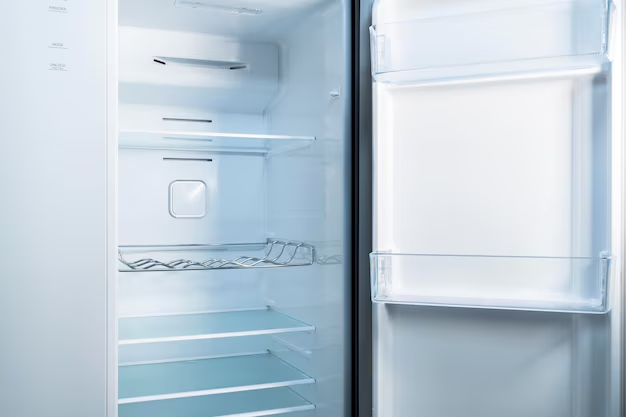Why is Your Refrigerator Freezing Up? How to Identify and Solve Common Problems
Imagine reaching into your refrigerator expecting a refreshing drink or crisp vegetables, but instead finding items frozen solid. It's a frustrating problem many refrigerator owners face, and understanding the factors causing your refrigerator to act more like a freezer can save both your food and sanity. So, what really causes a refrigerator to freeze up? Let's dive into the common reasons and solutions.
Understanding the Fridge Freezing Phenomenon
Refrigerators are designed to keep our food at a safely cool temperature just above freezing. When they freeze, it disrupts the delicate balance designed to keep perishable goods fresh. The primary purpose of a fridge is to maintain a consistent temperature—usually between 35°F and 38°F. When temperatures dip lower than this range, food quality can degrade, nutrients can be compromised, and textures may alter.
The Mechanics Behind a Refrigerator
To understand the potential causes of freezing, it's crucial to grasp how a refrigerator works. Refrigerators use a thermodynamic cycle to transfer heat from the inside to the outside. This cycle includes components such as the compressor, condenser, evaporator, and thermostat. Each element plays a role in regulating temperature.
- Compressor: Pumps refrigerant through the system.
- Condenser Coils: Release heat absorbed from inside the fridge.
- Evaporator Coils: Cool the fridge’s interior by absorbing heat.
- Thermostat: Monitors and adjusts the internal temperature.
By ensuring these components are functioning correctly, the refrigerator maintains a safe, cool environment for food storage.
Causes of a Refrigerator Freezing Up
1. Faulty Thermostat Settings
One of the simplest yet most common reasons for a fridge freezing up is incorrect thermostat settings. If the thermostat is set too low, it will send continuous signals to the compressor to cool down more than necessary.
Solution: Check the temperature dial or control panel (typically you should aim for the recommended setting of around 37°F). Adjust the thermostat incrementally and observe changes over a few hours.
2. Blocked Air Vents
Airflow is critical in maintaining consistent temperatures inside your refrigerator. If items block the air vents, cold air distribution can become uneven and lead to freezing in certain areas.
Solution: Rearrange your items to promote better airflow. Keep vents unobstructed by large boxes or bulky items to allow air to circulate freely.
3. Damaged Door Seals
A refrigerator relies on airtight seals to maintain its internal climate. Damaged or worn-out seals can let in warmer air, causing the compressor to overwork and freeze the refrigerator.
Solution: Inspect door seals for cracks or gaps. Use the dollar bill test—close a dollar bill in the door and see if it easily slides out. If yes, consider replacing the gaskets to restore proper sealing.
4. Malfunctioning Thermostat Sensor
The thermostat sensor monitors the fridge’s temperature. If it’s faulty, the refrigerator may not know when to stop cooling, leading to freezing.
Solution: Check the sensor's positioning. Ensure it's not touching any food and is properly connected. Replacement might be necessary if malfunctioning persists.
5. Refrigerant Level Issues
In some cases, the problem might stem from too much or too little refrigerant, affecting the cooling cycle's efficiency.
Solution: This can be complex and typically requires a professional to handle refrigerant safely, as it can be harmful to both the environment and the appliance itself.
Additional Considerations for Optimal Refrigerator Performance
Regular Maintenance
Routine checks and maintenance not only prevent freezing issues but extend the life of your refrigerator:
Clean Condenser Coils: Dusty coils force the compressor to work harder. Cleaning them with a vacuum or brush can improve efficiency.
Monitor Door Alignment: Ensure doors are aligned so seals fit snugly against the body of the refrigerator.
Defrost Regularly: Manual defrosting of your unit can prevent ice buildup if you notice regular freezing.
Placement and Environment
The location of your refrigerator plays a significant role in its performance:
Away from Heat Sources: Place your fridge away from ovens, dishwashers, or direct sunlight to prevent it from compensating for external heat.
Adequate Ventilation: Ensure there's enough space around all sides for air circulation to prevent overheating of the compressor.
Troubleshooting Guide: Quick Tips to Prevent Freezing
Here’s a handy checklist 📝 to keep your refrigerator running smoothly:
- ✅ Adjust Thermostat: Set it between 35°F-38°F.
- ✅ Improve Airflow: Keep items away from vents.
- ✅ Inspect Door Seals: Use the dollar bill test.
- ✅ Check Thermostat Sensor: Ensure correct placement and functionality.
- ✅ Clear Condenser Coils: Clean at least twice a year.
- ✅ Observe Fridge Location: Maintain a cool external environment around the unit.
When to Seek Professional Help
While many issues can be handled with a bit of DIY inspection and maintenance, there are instances where professional intervention is necessary:
- Persistent problems despite adjusting settings and performing checks.
- Inspecting internal components beyond the ordinary scope of an owner’s maintenance.
- Concerns about refrigerant levels or compressor efficacy.
Final Thoughts
Maintaining a properly functioning refrigerator isn’t just about preventing freezing issues; it’s about preserving food quality, minimizing waste, and ensuring energy efficiency. By understanding these common causes and engaging in regular maintenance, you can prevent your refrigerator from freezing up and elongate its lifespan.
With these insights, you are now equipped with the knowledge to tackle refrigerator freezing issues confidently. Keep your appliance in top shape, and enjoy fresh, perfectly chilled foods and drinks every time!
